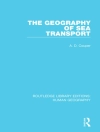Using an innovative approach, this book interprets the
unprecedented transformation of contemporary China’s major
cities. It deals with a diversity of trends and analyzes their
sources.
* Offers a multi-dimensional analysis of urban life in China
* Highlights a diversity of trends in the areas of migration,
criminal victimization, gated communities, and the status of women,
suburbanization, and neighbourhood associations
* Each chapter includes input from both an expert on urban life
in China and an ‘outside’ expert from the fields of sociology,
geography, economics, planning, political science, history,
demography, architecture, or anthropology
* An alternative theoretical perspective comparing the Chinese
experience with other urban settings in the United States, Poland,
Russia, Vietnam, East and South East Asia, and South America
Inhoudsopgave
Notes on the Contributors viii
Series Editors’ Preface xiii
Acknowledgments xiv
Introduction: Urban China in Comparative Perspective 1
John R. Logan and Susan S. Fainstein
Part I: Market Transition in Work Units and the Labor Market 25
1 Two Decades of Reform: The Changing Organization Dynamics of Chinese Industrial Firms 27
Shahid Yusuf and Kaoru Nabeshima
2 The Myth of the ‘New Urban Poverty’? Trends in Urban Poverty in China, 1988-2002 48
Simon Appleton and Lina Song
3 Class Structure and Class Inequality in Urban China and Russia: Effects of Institutional Change or Economic Performance? 66
Yanjie Bian and Theodore P. Gerber
4 Gender and the Labor Market in China and Poland 89
C. Cindy Fan and Joanna Regulska
Part II: Changing Places 113
5 Urbanization, Institutional Change, and Sociospatial Inequality in China, 1990-2001 115
Michael J. White, Fulong Wu, and Yiu Por (Vincent) Chen
6 Growth on the Edge: The New Chinese Metropolis 140
Yixing Zhou and John R. Logan
7 Mirrored Reflections: Place Identity Formation in Taipei and Shanghai 161
Jennifer Rudolph and Hanchao Lu
8 Is Gating Always Exclusionary? A Comparative Analysis of Gated Communities in American and Chinese Cities 182
Youqin Huang and Setha M. Low
Part III: Impacts of Migration 203
9 Urbanization in China in the 1990s: Patterns and Regional Variations 205
Zai Liang, Hy Van Luong, and Yiu Por (Vincent) Chen
10 Trapped in Neglected Corners of a Booming Metropolis: Residential Patterns and Marginalization of Migrant Workers in Guangzhou 226
Min Zhou and Guoxuan Cai
11 Migration and Housing: Comparing China with the United States 250
Weiping Wu and Emily Rosenbaum
Part IV: Social Control in the New Chinese City 269
12 Economic Reform and Crime in Contemporary Urban China: Paradoxes of a Planned Transition 271
Steven F. Messner, Jianhong Liu, and Susanne Karstedt
13 Migration, Urbanization, and the Spread of Sexually Transmitted Diseases: Empirical and Theoretical Observations in China and Indonesia 294
Christopher J. Smith and Graeme Hugo
14 The State’s Evolving Relationship with Urban Society: China’s Neighborhood Organizations in Comparative Perspective 315
Benjamin L. Read and Chun-Ming Chen
Subject index 336
Author index 355
Over de auteur
John R. Logan is Professor of Sociology and Director of the initiative on Spatial Structures in the Social Sciences at Brown University. Founder of the Urban China Research Network, supported by the Andrew W. Mellon Foundation, Dr. Logan is also a member of the editorial boards of Journal of Urban Affairs and City and Community. He was chosen Distinguished Professor of Sociology at the University at Albany, SUNY, as well as Director of the Lewis Mumford Center for Comparative Urban and Regional Research. In April 2003 he was selected by American Demographics magazine as one of five social demographers whose work has most influenced his field in the last 25 years.












